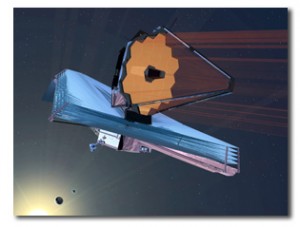The next talk as part of George Mason Observatory’s ‘Evenings Under the Stars’ series (where you’ll also get to look at awesome galaxies, stars, planets and more through our 0.8 meter telescope!) will be ‘New Frontiers in Infrared Astronomy – The James Webb Space Telescope’ by Shobita Satyapal. As always the event is free and everyone is invited!
Some details about the event: Tuesday 13 November 2012: 1st talk at 6 PM, same talk at 6 :30 PM, observing starts at 6:30PM until 8PM. Directions to GMU and Research Hall here: http://eagle.gmu.edu/map/fairfax.php Zoom in to find Research Hall next to engineering building and York River Rd. Just keep an eye out for weather – the event may be postponed (to November 20th) or cancelled due to bad conditions – updates will be available here – Observatory Twitter
In the early 1980s the first space-based infrared observatory surveyed the entire sky and found that the sky lit up with over 300,000 sources, most of which were previously unidentified. Many of these sources were exotic star-forming-galaxies that emit up to 50 percent of the light in the Universe. Infrared telescopes allow us to peer into the dusty cocoons in which stars and planets are forming to discover how they are born. Since the 1980s, we have made major technological advances in infrared astronomy. In this talk, Prof. Satyapal will give a brief overview of infrared astronomy, focusing on the next great NASA observatory: The James Webb Space Telescope (JWST). JWST is the successor to the Hubble Space Telescope, scheduled to be launched in 2018. It will allow us to observe the first luminous glows after the Big Bang and provide breakthroughs in our understanding of a wide range of science areas including the formation of galaxies, stars, and planets to the evolution of our solar system. She will present JWST’s main science goals and technological challenges.
Shobita Satyapal is a professor of Physics and Astronomy in the George Mason School of Physics, Astronomy and Computational Sciences. She received her PhD in physics from the University of Rochester and held postdoctoral positions at the National Air and Space Museum, and NASA Goddard Space Flight Center. Prior to joining Mason, she was an Instrument Scientist for the James Webb Space Telescope at the Space Telescope Science Institute and NASA Goddard. Her current research interests focus on understanding the connection between supermassive black holes and the host galaxies in which they reside.



 Additional questions and feedback on the Observatory site can be addressed to:
Additional questions and feedback on the Observatory site can be addressed to: